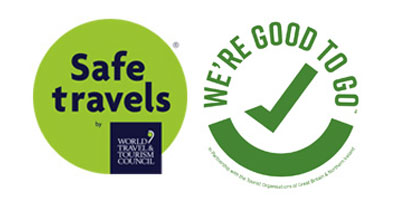- Home
- Destinations
Lake Eyasi
location:
Arusha,Tanzania
Area
Covers 137 km²
Category
National Park
Request A Quote
happy holiday
Book Your Dream Safari Today
Unforgettable wildlife moments are just a click away.
Destination Overview:
Lake Eyasi is located in the northern part of Tanzania, in the Great Rift Valley, at the base of the Ngorongoro Highlands. It lies to the south of the Serengeti and north of the Ngorongoro Crater, making it a great addition to a safari circuit.
The lake is about 50 kilometers (31 miles) southwest of the town of Karatu and is relatively close to the famous Ngorongoro Crater, making it easily accessible for tourists.
Tourist Attractions:
- The Lake Itself: Lake Eyasi is a shallow, saline, and alkaline lake. Although it rarely holds water throughout the year, it’s often a large, dry basin that reflects the striking colors of the surrounding landscape. During the rainy season, the lake fills up, attracting a variety of wildlife, including bird species like flamingos and pelicans. The stark contrast between the dry lakebed and seasonal water makes it a fascinating site to explore.
- The Hadzabe Tribe: One of the most unique aspects of Lake Eyasi is its proximity to the Hadzabe people, one of the last remaining hunter-gatherer tribes in Africa. Visitors can interact with the Hadzabe, who continue their traditional lifestyle of hunting with bows and arrows, gathering wild fruits, and living off the land. Spending time with the Hadzabe provides an unparalleled opportunity to learn about one of the world’s most ancient ways of life.Learn more about the Hadzabe people.
- The Datoga Tribe: Another indigenous group near Lake Eyasi are the Datoga people, who are skilled in cattle herding and metalworking. The Datoga are often referred to as the “Blacksmiths of East Africa” due to their craftsmanship, particularly in producing iron tools. Visitors can engage with the Datoga people and witness their traditional activities, such as beadwork, leather-making, and metal forging.
- Birdwatching: Lake Eyasi is a haven for birdwatchers, especially during the rainy season when the lake fills with water. The surrounding wetlands, marshes, and woodlands become home to a variety of bird species, including flamingos, ostriches, and a wide variety of waterfowl. The dry lakebed is also frequented by birds of prey, making it a great destination for bird enthusiasts.
- The Surrounding Landscapes: The landscapes surrounding Lake Eyasi are diverse and dramatic, with dry, cracked earth, rolling hills, and savannah. Visitors can hike around the lake and through the nearby woodlands, experiencing a remote, tranquil environment. The view of the surrounding escarpments adds to the beauty of this off-the-beaten-path destination.
Fun Facts and Why It Differs from Other Places:
- Home to Ancient Tribes: Lake Eyasi is one of the few places in the world where you can still experience the traditional hunter-gatherer lifestyle. The Hadzabe people, who live around the lake, have existed in the area for thousands of years and maintain their ancestral ways of living in harmony with nature. Their culture and way of life are remarkably different from the modern world, offering a rare window into humanity’s past.
- A Saltwater Lake: Lake Eyasi is a saline and alkaline lake, much like its neighbor, Lake Natron. However, unlike Lake Natron, which is known for its bright red color, Lake Eyasi’s waters are often more muted in tone, depending on the season. When the lake fills up, it provides a temporary, yet important water source for local wildlife, including large flocks of migratory birds.
- Seasonal Changes: The lake’s water level fluctuates dramatically, transforming from a dry, dusty basin to a shallow wetland during the rainy season. This stark contrast between the dry and wet seasons provides a unique visual experience and different opportunities for wildlife watching throughout the year.
- Cultural Richness: The proximity of Lake Eyasi to both the Hadzabe and Datoga tribes makes it a culturally rich area to visit. While many safari destinations focus primarily on wildlife, Lake Eyasi offers an additional layer of cultural immersion, making it unique among Tanzania’s natural attractions.
Best Time to Visit:
- Dry Season (June to October): The best time to visit Lake Eyasi is during the dry season, when the surrounding landscapes are more accessible, and wildlife is concentrated around the lake. While the lake itself may be dry, this is a great time for hiking, interacting with the local tribes, and exploring the area’s unique wildlife. The Hadzabe people are also most active during this time, as they are more likely to be found in their traditional hunting grounds.
- Rainy Season (November to May): The rainy season transforms Lake Eyasi into a shallow, seasonal lake, which attracts a variety of birdlife. The wet season can make some areas less accessible due to muddy conditions, but it offers the opportunity to see migratory birds and witness the lake’s seasonal wildlife influx. For those interested in birdwatching, the rainy season is particularly rewarding.
Top Things to Do at Lake Eyasi
- Visiting Hadza and Datoga communities to learn traditional foraging and crafts.
- Walking along the alkaline lake shores to spot waterbirds and flamingos.
- Walking along the alkaline lake shores to spot waterbirds and flamingos.
- Exploring seasonal marshlands rich with wildlife when water levels allow.
- Taking guided nature walks to discover unusual plants and small mammals.
- Observing Datoga blacksmiths at work, forging tools by hand.
- Joining a cultural demonstration of Hadza survival skills and tracking.
- Birdwatching for storks, pelicans, egrets, and rare shorebirds.
- Enjoying peaceful sunsets over the lake framed by acacia silhouettes.
Where to Stay at Lake Eyasi
Lake Eyasi Safari Lodge:
This is one of the most popular and comfortable accommodation options near Lake Eyasi. The lodge is set on the edge of the lake and offers stunning views of the surrounding landscape. With spacious rooms, traditional decor, and an outdoor pool, it provides a perfect place to relax after a day of exploring.
Tindiga Tented Camp:
Located near the lake, this small, eco-friendly camp offers a more rustic and immersive experience. The camp provides comfortable tents with en-suite bathrooms, and visitors can enjoy traditional meals in the camp’s open-air dining area. It’s an excellent option for those looking for an authentic and intimate stay in the heart of nature.
Kambona Safari Camp:
This camp offers a unique experience for those visiting Lake Eyasi. Located in the vicinity of the lake, it provides a traditional African safari experience with the comfort of modern amenities. It also offers guided tours to meet the local tribes and explore the area’s wildlife.
Traditional Maasai Bomas:
For a truly authentic cultural experience, visitors can stay with the Maasai or Hadzabe people in simple bomas (traditional huts). Staying with local tribes offers a rare and immersive experience where you can learn about their lifestyles firsthand and witness their daily routines.
Frequently Asked Questions
What is Lake Eyasi known for?
Lake Eyasi is famous for its ancient Hadzabe and Datoga tribes, birdwatching, and seasonal salt lake landscapes.
Can tourists visit the Hadzabe tribe?
Yes, guided cultural tours offer respectful visits to meet the Hadzabe and learn about their traditional lifestyle.
Where is Lake Eyasi located in Tanzania?
It’s located in the northern Great Rift Valley, south of Serengeti and west of Ngorongoro Crater.
Photo Gallery:
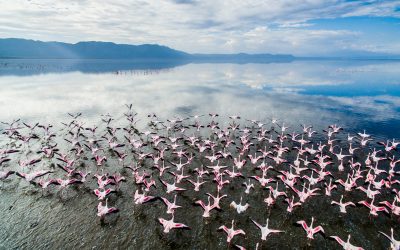
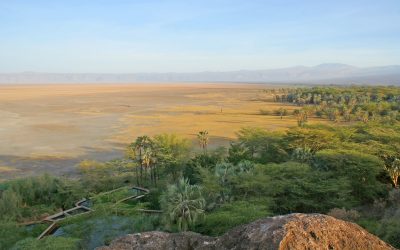
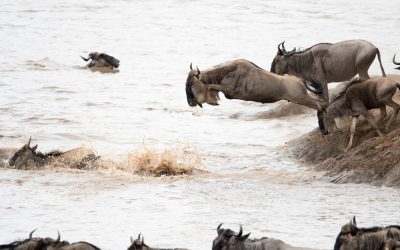
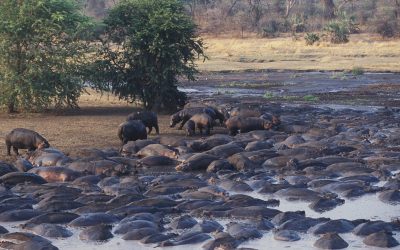
Still Have Questions? We’re Here to Help! Contact Us
Everything You Need to Know Before You Travel.
Will I have a tour guide during my trip?
Yes, most of our packages include professional local tour guides to enhance your experience.
What happens if my flight is delayed?
We understand delays happen. Please notify us as soon as possible so we can adjust your schedule accordingly.
Can I request special meals during the trip?
Absolutely. Let us know in advance about any dietary needs, and we’ll ensure your meals are customised.
Is there 24/7 customer support while traveling?
Report any loss to your guide immediately. We will assist you in contacting the relevant authorities or local services.
What payment methods do you accept?
We accept major credit cards, bank transfers, and selected online gateways. Some packages may offer installment plans.
Is my payment refundable if I cancel my trip?
Refund policies depend on the cancellation timeframe and package terms. We’ll always share clear terms upfront.
Can I change my payment method after booking?
Yes, just contact our support team to update or switch your preferred payment method.
Are there additional fees beyond the package price?
We strive for transparency. Any additional costs (e.g., optional activities or upgrades) will be clearly communicated before payment.
Do I need a visa for my trip?
Visa requirements depend on your nationality and destination. We’re happy to help with the application process if needed.
Are vaccinations required for certain destinations?
Yes, some regions may require specific vaccinations. We recommend checking with your local travel health clinic or consulting us directly.
What travel documents should I bring?
Yes, we strongly recommend travel insurance to cover emergencies, trip cancellations, and medical expenses.
Do I need travel insurance?
Of course! We can help arrange international and domestic flights as part of your travel package.
How do I book a tour package?
You can book a tour through our website, by phone, or by visiting our office. Simply choose your desired package, provide traveler details, and complete the payment to confirm your booking.
Can I reserve a tour without immediate payment?
Yes, you can make a reservation and secure your spot with a deposit. Full payment will be required closer to the departure date, as per our terms and conditions.
How far in advance should I book my trip?
We recommend booking at least 2 to 6 months in advance, especially during peak travel seasons, to ensure availability and the best rates.
Will I receive a confirmation after booking?
Absolutely. Once your booking is complete, we’ll send a confirmation email with your itinerary, payment receipt, and other important details.






